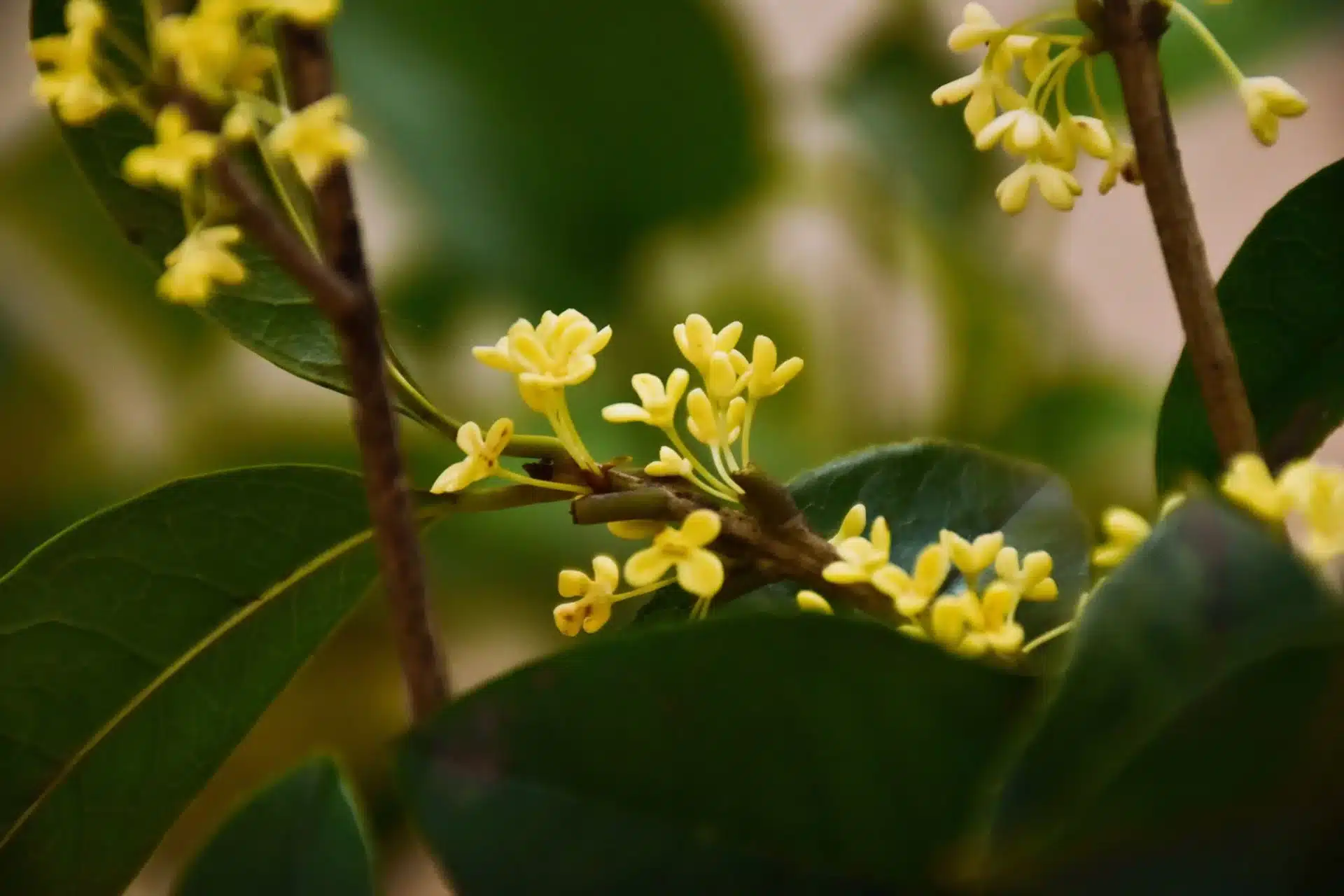Blog
Osmanthus flowers and their delicate aroma?

Osmanthus flowers, renowned for their exquisite beauty and captivating fragrance, embody the essence of elegance and grace in the botanical world. Originating from East Asia, these delicate blooms have enthralled cultures for centuries, captivating the senses and inspiring countless artistic, culinary, and spiritual expressions. Let’s embark on a journey to explore the enchanting world of osmanthus flowers and delve into the secrets behind their delicate aroma.
A Floral Symphony:
Osmanthus flowers, also known as “gui hua” in Chinese and “kinmokusei” in Japanese, emit a fragrance that transcends mere scent—it is a sensory experience that evokes feelings of joy, tranquility, and nostalgia. The aroma of osmanthus is often described as sweet, fruity, and floral, with subtle hints of apricot, peach, and citrus. It is a fragrance that lingers delicately in the air, leaving a lasting impression on those who encounter it.
Cultural Reverence:
In many Asian cultures, osmanthus flowers hold profound cultural significance and are revered for their symbolic meanings and aesthetic beauty. In China, osmanthus is celebrated as a symbol of prosperity, happiness, and harmony. The Mid-Autumn Festival, a cherished holiday in Chinese culture, features osmanthus as a central motif, symbolizing reunion and abundance. In Japan, osmanthus is admired for its elegance and grace, with its delicate blossoms inspiring art, poetry, and tea ceremonies.
Harvesting the Essence:
The delicate aroma of osmanthus is extracted through various methods, including enfleurage, solvent extraction, and steam distillation. Enfleurage involves placing osmanthus flowers onto a layer of fat or oil to absorb their fragrance, while solvent extraction utilizes solvents to dissolve the aromatic compounds from the flowers. Steam distillation, the most common method, involves passing steam through the flowers to release their essential oils, which are then collected and concentrated.
Culinary Delights:
Osmanthus flowers are prized for their culinary versatility and are used to infuse teas, wines, desserts, and savory dishes with their delicate aroma and flavor. Osmanthus tea, made by steeping dried flowers in hot water, offers a soothing and aromatic beverage that is enjoyed year-round. Osmanthus-flavored desserts, such as osmanthus jelly, osmanthus cake, and osmanthus rice wine, are treasured for their subtle sweetness and floral notes, making them popular choices for special occasions and celebrations.
Aromatherapy and Wellness:
The delicate aroma of osmanthus has long been valued for its therapeutic properties in aromatherapy and wellness practices. Osmanthus essential oil, derived from the flowers through steam distillation, is prized for its calming, uplifting, and mood-enhancing effects. It is believed to reduce stress, anxiety, and fatigue, promote relaxation, and elevate the spirit. Osmanthus-scented candles, room sprays, and bath products offer consumers a luxurious sensory experience that soothes the mind, body, and soul.
Symbolism and Spirituality:
In addition to its cultural and culinary significance, osmanthus holds spiritual importance in many Asian traditions. The sweet fragrance of osmanthus is believed to purify the air and uplift the soul, creating a sense of harmony and balance in the environment. In Chinese and Japanese spiritual practices, osmanthus is often used in rituals and ceremonies to honor ancestors, offer prayers for blessings, and celebrate the beauty of the natural world.
The Essence of Elegance:
The delicate aroma of osmanthus is a testament to the timeless allure of nature’s beauty and the intricate complexity of floral fragrances. It is a fragrance that transcends boundaries and resonates with people from all walks of life, evoking emotions, memories, and experiences that are deeply personal and profound. Whether encountered in a bustling city street or a tranquil garden oasis, the delicate aroma of osmanthus captivates the senses and transports the soul to a world of beauty, wonder, and serenity.
Preserving the Legacy:
As osmanthus flowers continue to enchant and inspire generations to come, efforts are underway to preserve and protect these precious blooms and their delicate aroma for future enjoyment. Conservation initiatives, botanical gardens, and educational programs seek to raise awareness about the cultural, ecological, and economic importance of osmanthus flowers and their role in sustaining biodiversity and cultural heritage.
In conclusion, osmanthus flowers and their delicate aroma represent a harmonious blend of nature’s beauty, cultural heritage, and spiritual significance. From the bustling streets of China to the tranquil gardens of Japan, these exquisite blooms captivate the senses and inspire awe and admiration in all who encounter them. As we cherish the timeless allure of osmanthus flowers and their delicate aroma, we honor the legacy of centuries-old traditions and the enduring spirit of beauty, grace, and elegance that defines the essence of osmanthus.
FAQ:



One thought on “Osmanthus flowers and their delicate aroma?”